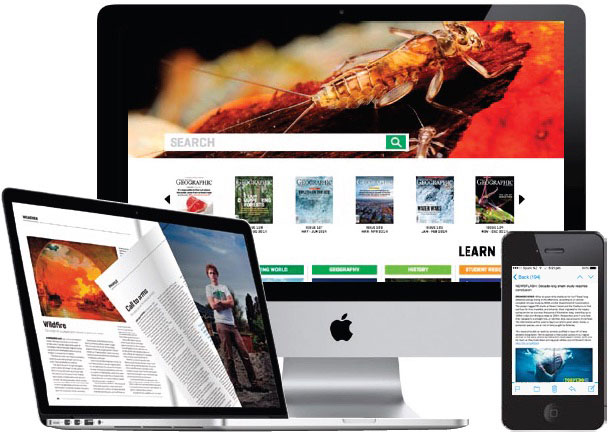The New Zealand Geographic Archive, including every issue ever published, has now connected New Zealand’s 668,000 students to the service. The deal was struck with the Ministry of Education – on the strength of the archive already available since 2013 to print subscribers and public libraries – and facilitated by the EPIC Consortium, a sort of Pharmac for electronic resources.
The deal brings the total number of provisioned users of the archive to 1.25 million—over a quarter of all New Zealanders.* The archive features 25 years of commissioned, award-winning writing and photography, and represents one of the largest and highest quality collections of local New Zealand content to be made available in recent time.
“In it are the stories that only a New Zealand-based publication would cover—the kiwifruit industry, geysers, shearing, and small town icons,”says editor/publisher James Frankham. “Few international journals have material on New Zealand marine reserves, the very latest on issues of water quality, the first days of life of a rainbow trout, a winter in the Maniototo, or a journey to Tokelau, New Zealand’s northern-most outpost.”
The platform is accessible using any internet-connect device, anywhere, without the requirement for special software or plugins. The six-million-word archive is fully text-searchable, meta-tagged, and supports a number of ways of browsing.
“It was our Mission Impossible,” says Frankham. “Searching and navigating collections like this presents a huge problem – the content is so deep and rich, and the lens of ‘search’ is so inadequate. Rather than make search infinitely more complex, we realised we needed more lenses.”
As well as live search, the team developed facilities to browse by issue or explore the archive by school curriculum thread. A suite of free teachers’ resources are in production to allow a new way to interrogate the archive, and a news service delivers an email to teachers’ inboxes connecting news headlines with in-depth features available in the collection..
The service allows school librarians to promote the resource within their schools or regions by re-posting the archive connections on school intranets, newsletters and through social channels.
“What really sets the New Zealand Geographic Archive apart from other electronic resources is, perhaps predictably, the importance of the photographic coverage,”says Frankham.
“The visual narrative has always been as important as the written narrative for the magazine, and the power of the large images is a highly valued aspect of the Geographic reading experience.
“There was also a considerable amount of effort invested over a quarter of a century by editors and art directors into the logical and aesthetic flow of a story, and the relative emphasis given to each image. We wanted to preserve those values.
“The archive can be full-screened so the lavish photographic coverage is shown to advantage. And because it’s a web service, the template is being constantly updated and new features rolled out as
they become available—geotagging stories is on the development list, as is an interface to record users’ favourites.”
Along with all New Zealand schools, a number of public libraries and tertiary institutions provision the archive for their respective districts, staff and students. All current subscribers to the print magazine have access by right also.
“New Zealand Geographic content is world-class and timeless, and finding a way to deliver that over an elegant digital platform was always going to be the holy grail,” says Frankham. “The arrangement with the Ministry of Education is the culmination of years of hard work and a long-held desire to make this enormous resource available to Kiwi kids in a meaningful way.”
- www.nzgeographic.co.nz/discover
- james@nzgeographic.co.nz / 09 913 9623
Share this Post



